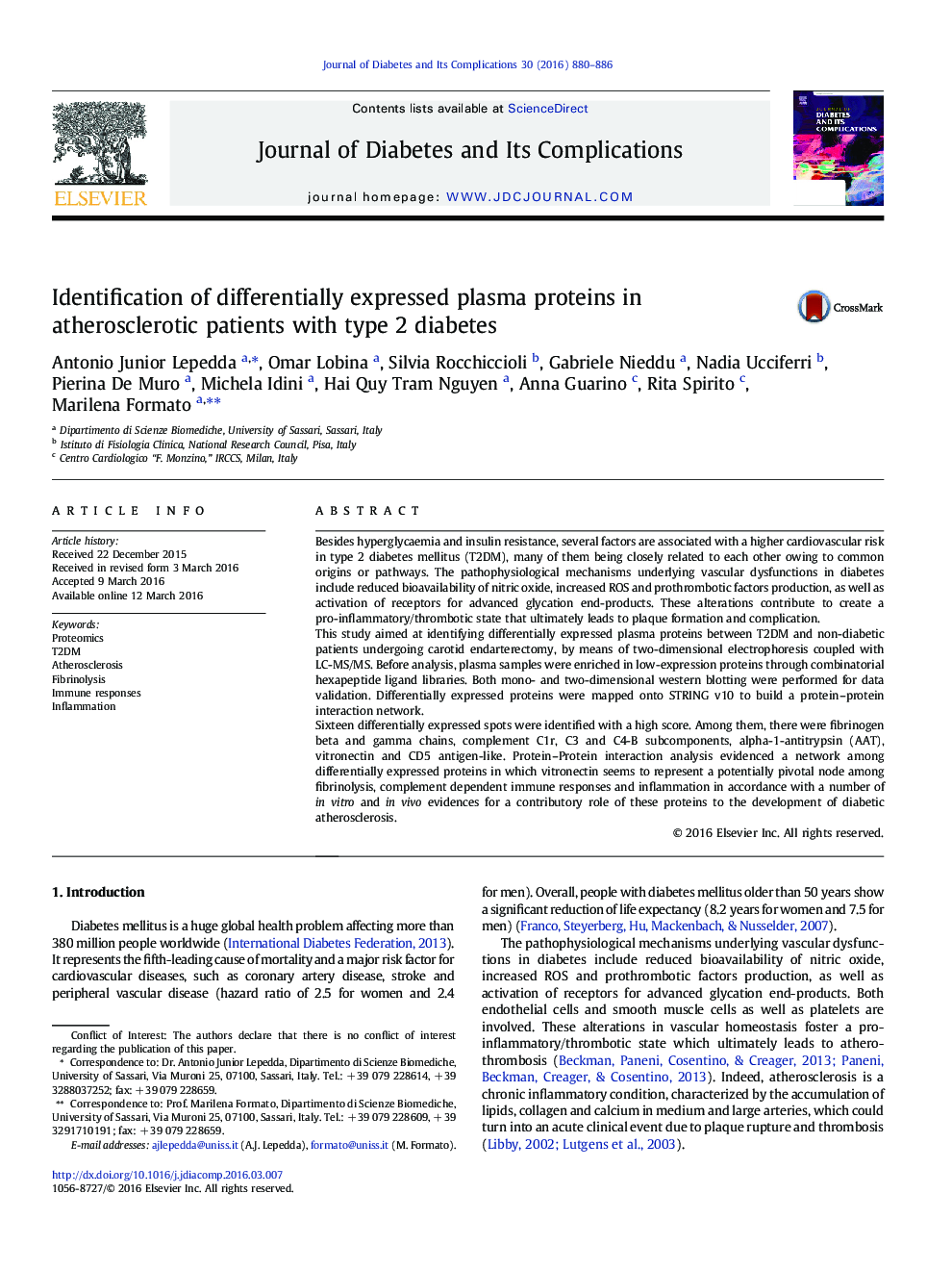| Article ID | Journal | Published Year | Pages | File Type |
|---|---|---|---|---|
| 2804093 | Journal of Diabetes and its Complications | 2016 | 7 Pages |
Besides hyperglycaemia and insulin resistance, several factors are associated with a higher cardiovascular risk in type 2 diabetes mellitus (T2DM), many of them being closely related to each other owing to common origins or pathways. The pathophysiological mechanisms underlying vascular dysfunctions in diabetes include reduced bioavailability of nitric oxide, increased ROS and prothrombotic factors production, as well as activation of receptors for advanced glycation end-products. These alterations contribute to create a pro-inflammatory/thrombotic state that ultimately leads to plaque formation and complication.This study aimed at identifying differentially expressed plasma proteins between T2DM and non-diabetic patients undergoing carotid endarterectomy, by means of two-dimensional electrophoresis coupled with LC-MS/MS. Before analysis, plasma samples were enriched in low-expression proteins through combinatorial hexapeptide ligand libraries. Both mono- and two-dimensional western blotting were performed for data validation. Differentially expressed proteins were mapped onto STRING v10 to build a protein–protein interaction network.Sixteen differentially expressed spots were identified with a high score. Among them, there were fibrinogen beta and gamma chains, complement C1r, C3 and C4-B subcomponents, alpha-1-antitrypsin (AAT), vitronectin and CD5 antigen-like. Protein–Protein interaction analysis evidenced a network among differentially expressed proteins in which vitronectin seems to represent a potentially pivotal node among fibrinolysis, complement dependent immune responses and inflammation in accordance with a number of in vitro and in vivo evidences for a contributory role of these proteins to the development of diabetic atherosclerosis.
